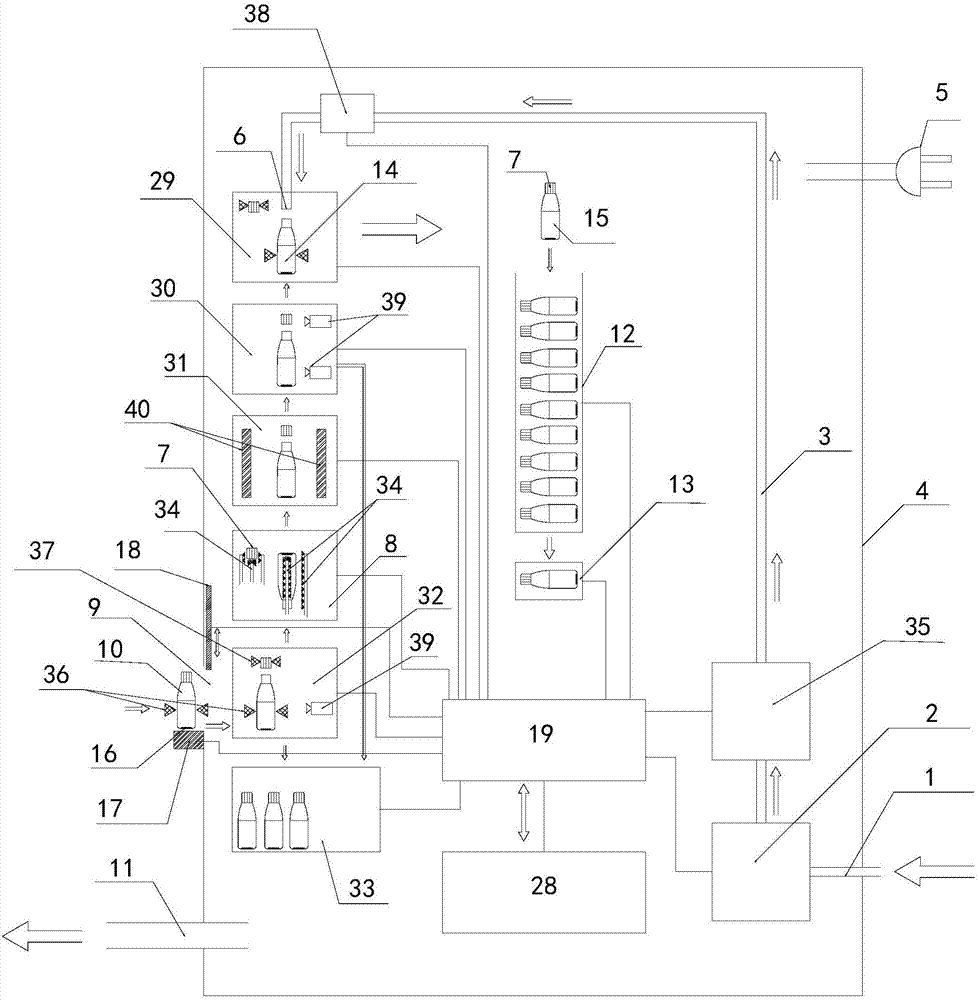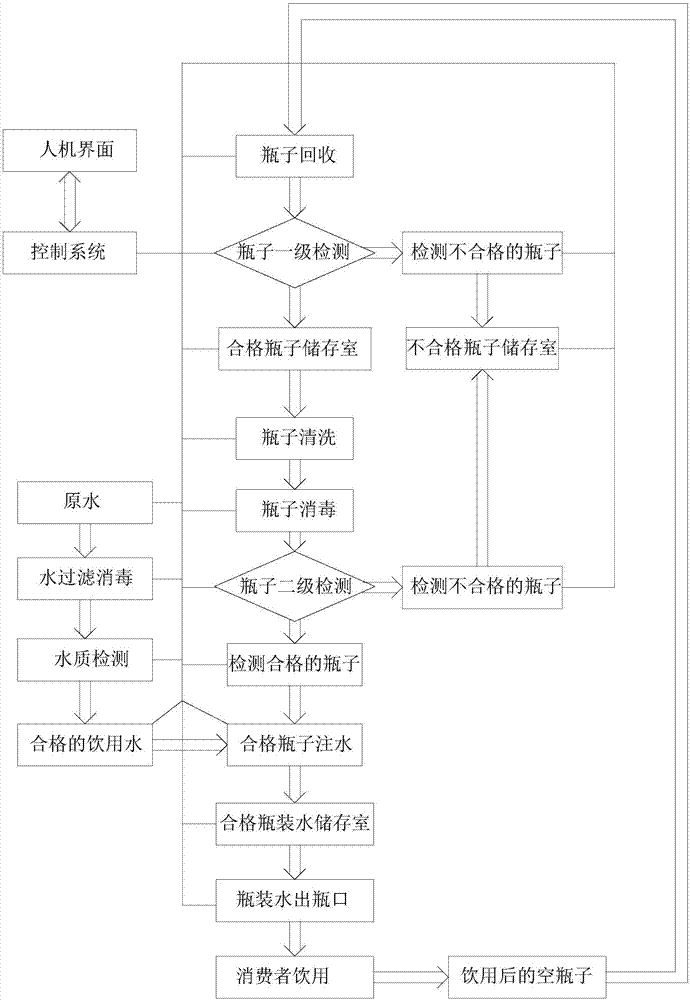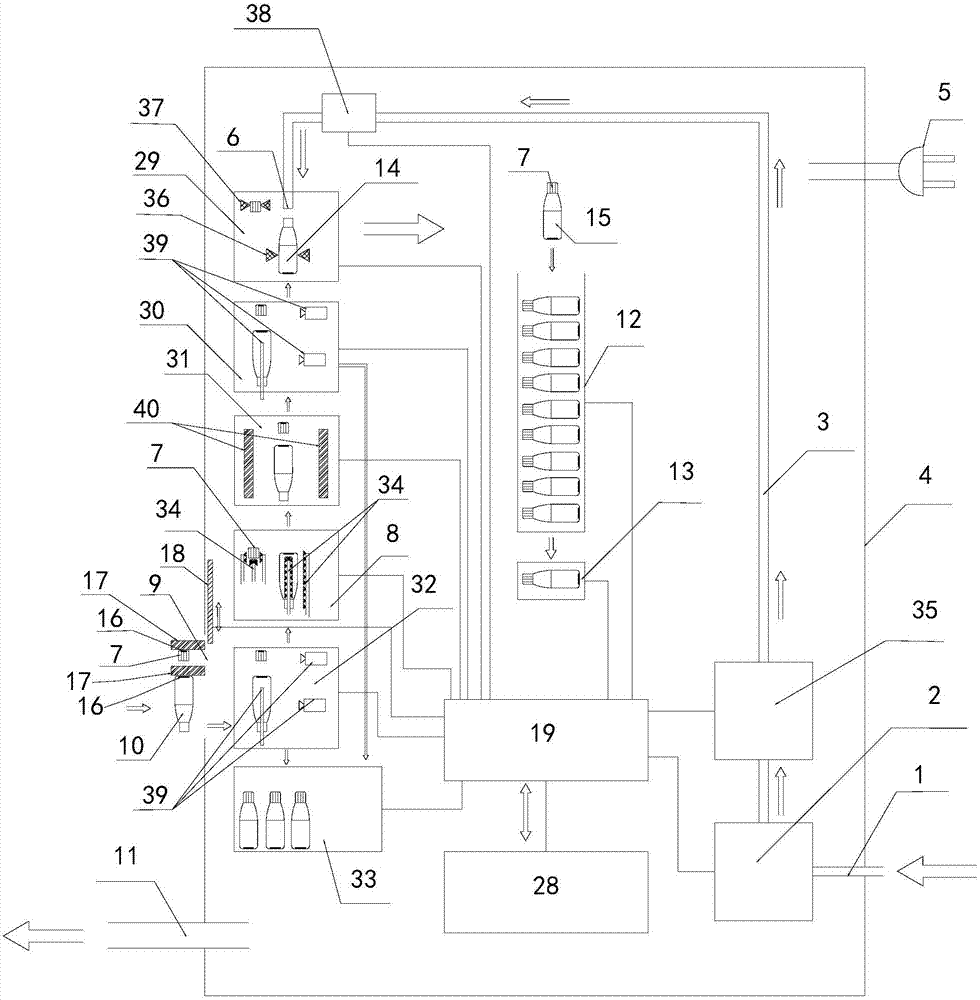Water dispenser
A water dispenser and water treatment technology, applied in the field of water dispensers, can solve the problems of manufacturing pollution, water dispensers are easily polluted, and cannot be replaced, and achieve the effects of eliminating energy consumption and pollution, saving disposable containers, and reducing drinking water costs.
- Summary
- Abstract
- Description
- Claims
- Application Information
AI Technical Summary
Problems solved by technology
Method used
Image
Examples
Embodiment 1
[0057] refer to figure 1 , is the first embodiment of the water dispenser of the present invention, the container used in the first embodiment is a bottle with a bottle cap, the container storage room is the bottled water storage room 12, and the bottle 14 is stored in the bottled water storage room 12 after filling water , the container outlet is the bottle outlet 13.
[0058] In this embodiment, the water dispenser includes: a power supply device 5, a water supply system, a recyclable liquid bottle 14 and a container recycling system; wherein, the water supply system is used to provide drinking water, and the container recycling system is used for recycling and processing over the bottle.
[0059] The water supply system includes: a water inlet 1 connected to a water source, a filling device 29 for filling water into the bottle 14, a clean water pipe 3 for connecting the water inlet 1 and the filling device 29, a bottle storage room for storing bottles, And the bottle outl...
Embodiment 2
[0075] refer to image 3 The difference between the second embodiment and the first embodiment is that a radio frequency identification tag 16 is installed on the bottle and the bottle cap at the same time, and the used bottle 10 and the bottle cap 7 are separately placed in the recovery port 9, and the recovery port 9 is provided with There are two radio frequency identification tag readers 17 , one is used to identify the radio frequency identification tag 16 on the used bottle 10 , and the other is used to identify the radio frequency identification tag 16 on the bottle cap 7 . Used bottle 10 is separated with bottle cap 7, and used bottle 10 is placed upside down, and used bottle 10 and bottle cap 7 enter respectively in the water dispenser after being identified by radio frequency identification tag reader 17. In this embodiment, placing the used bottle 10 upside down helps prevent the residual liquid in the used bottle 10 from entering the machine. Another advantage of t...
Embodiment 3
[0077] refer to Figure 4 The difference between the third embodiment and the second embodiment is that the bottle is changed into a cup that can be reused many times, and the bottle outlet is replaced with a cup outlet 23 . In some occasions, such as in the lobby of a bank, most consumers just want to drink water immediately instead of carrying it out. At this time, it is more convenient to use a cup than a bottle; and the indoor environment is better than outdoor A lot, therefore, can swap bottles for cups. Of course, the water dispenser can also be designed to provide bottled water and glassed water at the same time, so that consumers can choose by themselves. The second embodiment has the advantage of being able to provide recycled and environmentally friendly bottled water, which is convenient for drinkers to drink immediately, and is suitable for receiving visitors in various companies, factories, government agencies, and bank service halls. Of course, the water in the...
PUM
 Login to View More
Login to View More Abstract
Description
Claims
Application Information
 Login to View More
Login to View More - R&D
- Intellectual Property
- Life Sciences
- Materials
- Tech Scout
- Unparalleled Data Quality
- Higher Quality Content
- 60% Fewer Hallucinations
Browse by: Latest US Patents, China's latest patents, Technical Efficacy Thesaurus, Application Domain, Technology Topic, Popular Technical Reports.
© 2025 PatSnap. All rights reserved.Legal|Privacy policy|Modern Slavery Act Transparency Statement|Sitemap|About US| Contact US: help@patsnap.com



